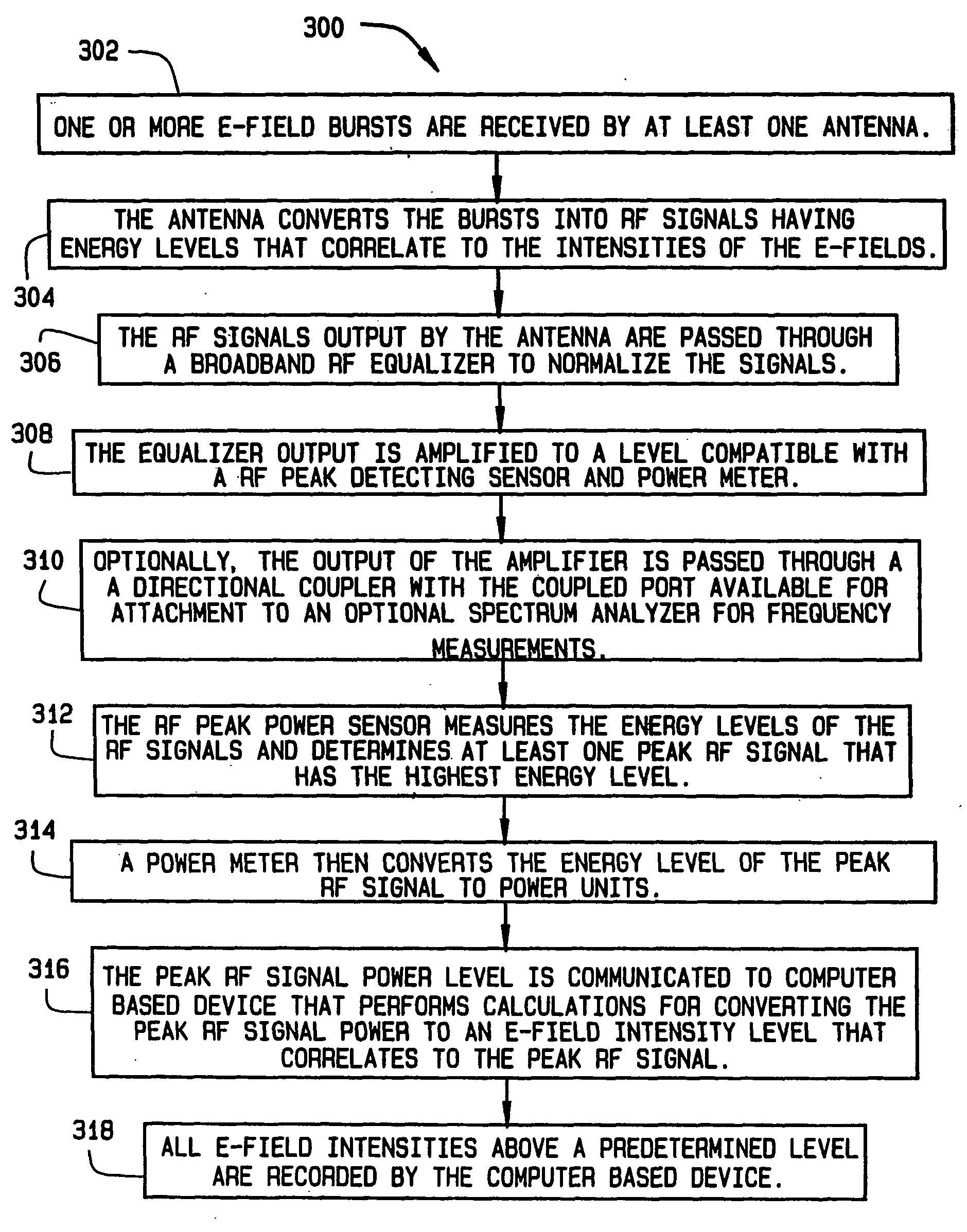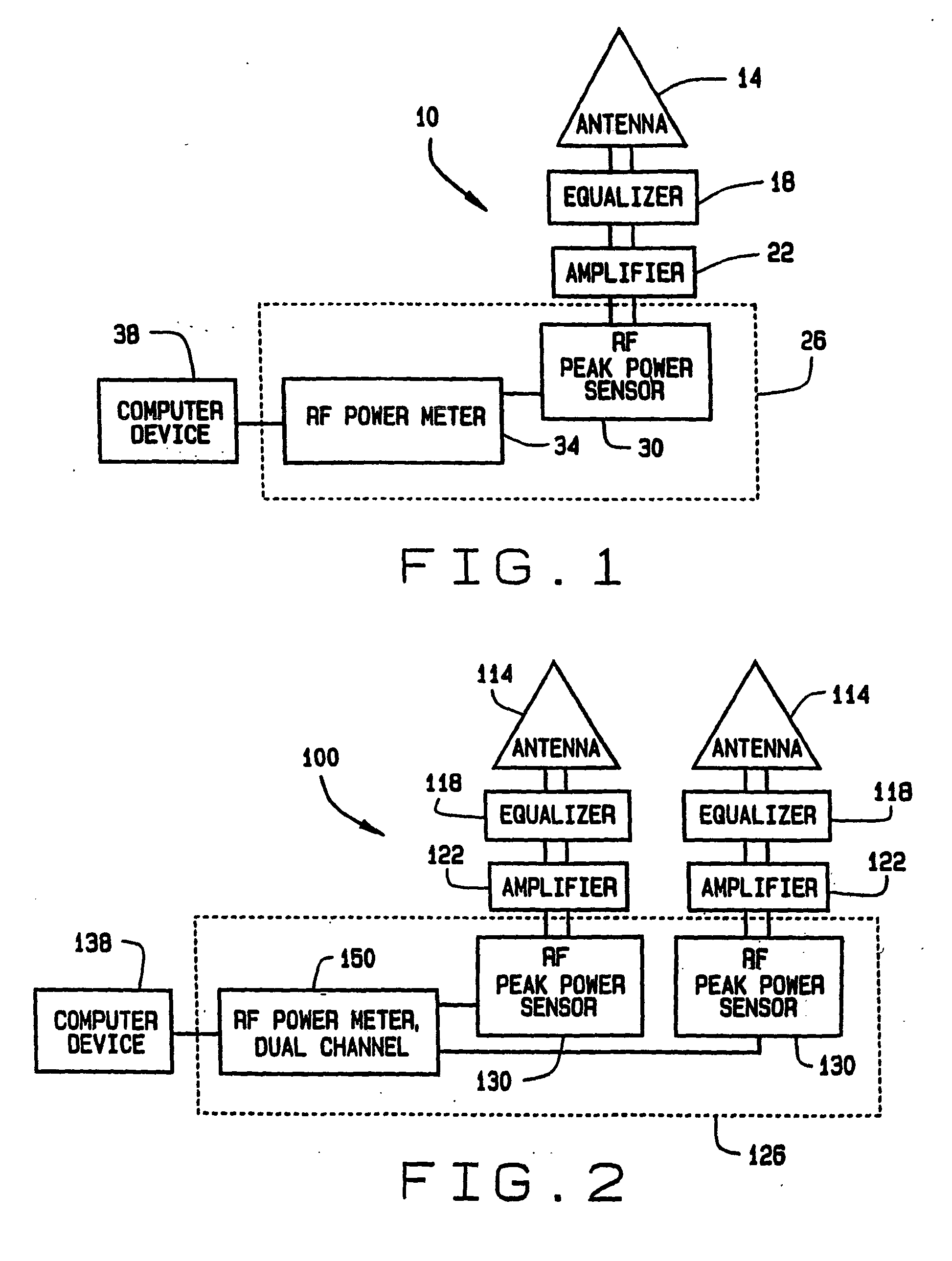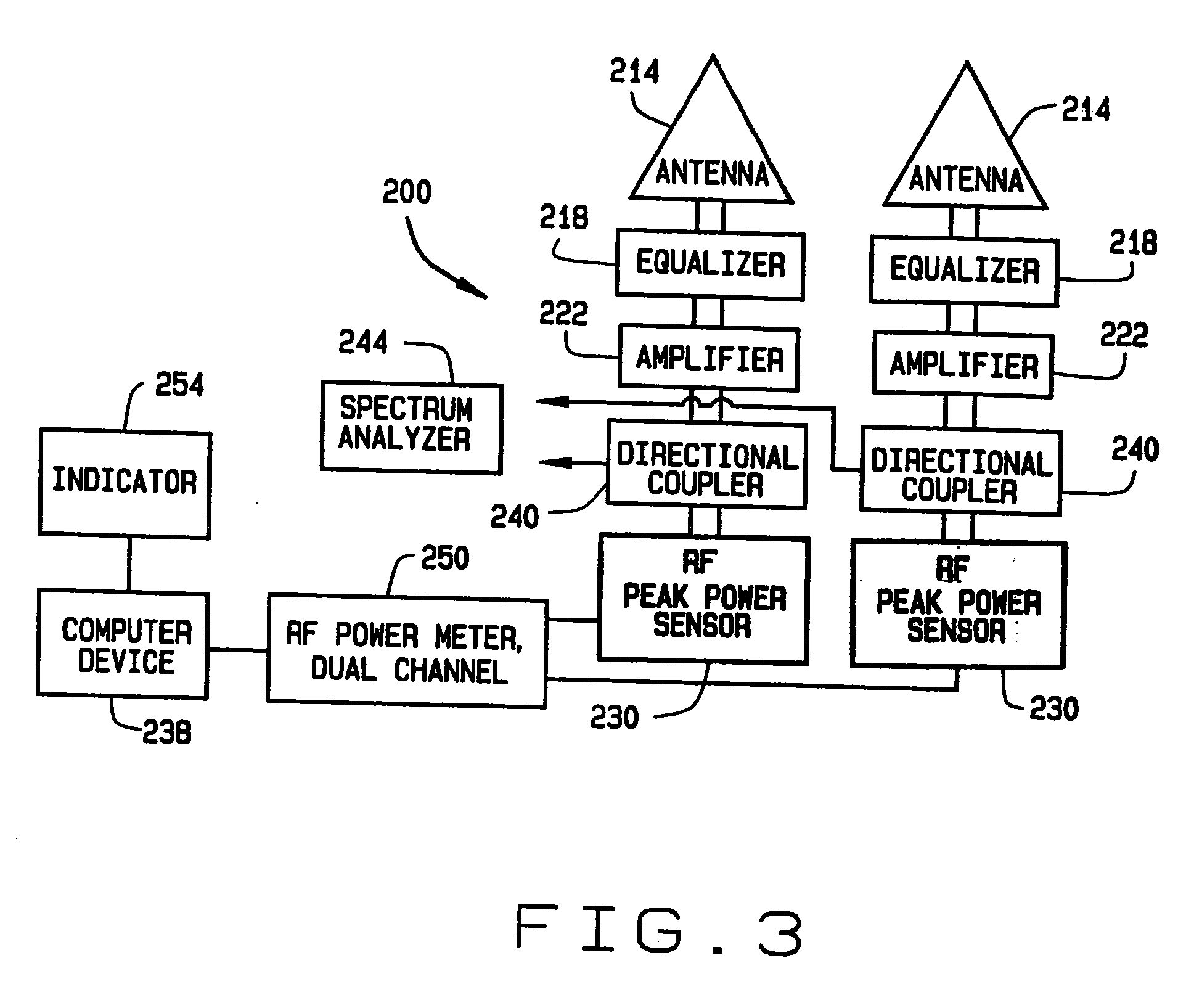E-field monitor for broadband pulsed
a technology of e-field monitor and broadband pulse, which is applied in the direction of frequency analysis, instruments, measurement devices, etc., can solve the problems of increasing the potential to cause interference and/or corruption of exposed electronic equipment, the inability to continuously capture and measure all narrow pulsed radar emissions, and the complexity and expense of known systems
- Summary
- Abstract
- Description
- Claims
- Application Information
AI Technical Summary
Benefits of technology
Problems solved by technology
Method used
Image
Examples
Embodiment Construction
[0013] The description of the invention below is merely exemplary in nature and, thus, variations that do not depart from the gist of the invention are intended to be within the scope of the invention. Such variations are not to be regarded as a departure from the spirit and scope of the invention.
[0014]FIG. 1 is a block diagram of an E-field monitoring system 10, in accordance with a preferred embodiment of the present invention. The system 10 includes an antenna 14 that detects one or more E-fields and converts the E-fields into radio frequency (RF) signals. The antenna 14 is capable of sensing E-fields having frequencies within a very broad frequency range, for example 1 to 10 GHz. Preferably, the antenna 14 is an omni-directional antenna, however, antenna 14 can be any antenna suitable for receiving narrow pulsed E-fields with a broad frequency range. For example, antenna 14 can be a uni-directional antenna if it is desirable to sense E-fields from only one direction. Additiona...
PUM
 Login to View More
Login to View More Abstract
Description
Claims
Application Information
 Login to View More
Login to View More - R&D
- Intellectual Property
- Life Sciences
- Materials
- Tech Scout
- Unparalleled Data Quality
- Higher Quality Content
- 60% Fewer Hallucinations
Browse by: Latest US Patents, China's latest patents, Technical Efficacy Thesaurus, Application Domain, Technology Topic, Popular Technical Reports.
© 2025 PatSnap. All rights reserved.Legal|Privacy policy|Modern Slavery Act Transparency Statement|Sitemap|About US| Contact US: help@patsnap.com



